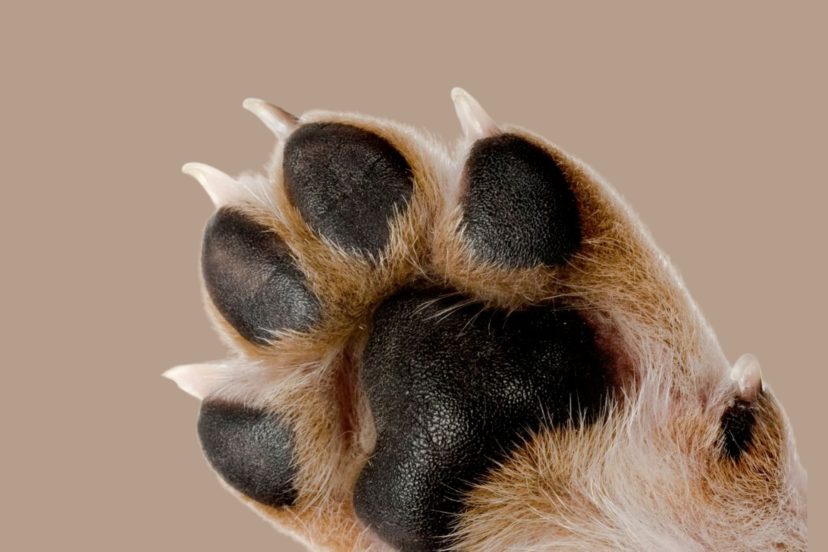What Dog Breeds Have Webbed Feet
Dogs with webbed feet are nature’s answer to aquatic adventures and specialized tasks. While all dogs have some degree of webbing between their toes, certain breeds retain pronounced webbing, making them exceptional swimmers, hunters, or diggers. Let’s dive into these unique pups’ world, figure out what dog breeds have webbed feet, and explore their history, purpose, and care needs.
Why Do Some Dogs Have Webbed Feet?
Webbed feet—thin membranes connecting a dog’s toes—act like natural paddles. This adaptation evolved to help breeds:
- Swim efficiently by pushing water.
- Dig or grip terrain (e.g., muddy riverbanks).
- Walk on slippery surfaces without sinking.
Most dogs lose partial webbing as they age, but breeds historically linked to waterwork, hunting, or digging retain this trait.
Top Dog Breeds with Webbed Feet
Let’s talk about what dog breeds have webbed feet:
Newfoundland
Bred as Canadian fishing companions, Newfoundlands rescued drowning sailors and hauled nets.
Webbed Feet Role: Their large, webbed paws propel them through water, while their thick coat insulates against cold.
Temperament: Gentle giants with a love for families and water play.
Portuguese Water Dog
Fished alongside Portuguese sailors, retrieving gear and herding fish.
Webbed Feet Role: Wide webbing aids endurance for long swims.
Temperament: Energetic, intelligent, and eager to please.
Labrador Retriever
Originated as duck retrievers for hunters.
Webbed Feet Role: Strong paddling ability makes Labs natural swimmers.
Temperament: America’s favorite family dog—friendly and adaptable.
Chesapeake Bay Retriever
Bred to retrieve waterfowl in icy Chesapeake Bay.
Webbed Feet Role: Webbing + round toes provide power in rough waters.
Temperament: Loyal, protective, and highly active.
Otterhound
Medieval otter hunters in England.
Webbed Feet Role: Webbing aids swimming, while a waterproof coat keeps them warm.
Temperament: Playful, rare, and great with kids.
Dachshund
Badger hunters who dug into burrows.
Webbed Feet Role: Webbing helps scoop dirt for digging.
Temperament: Bold, curious, and surprisingly agile.
German Shorthaired Pointer
Versatile hunters tracking land and water game.
Webbed Feet Role: Efficient swimming for retrieving ducks.
Temperament: High-energy athletes needing mental stimulation.
Irish Water Spaniel
One of the oldest spaniels, dating to the 7th century.
Webbed Feet Role: Webbed toes + a waterproof coat make them agile swimmers.
Temperament: Clownish, affectionate, and great for active families.
Poodle
Originally water retrievers in Germany.
Webbed Feet Role: Swimming and traversing muddy terrain.
Temperament: Hypoallergenic, intelligent, and versatile.
Nova Scotia Duck Tolling Retriever
Lured ducks within hunters’ range in Nova Scotia.
Webbed Feet Role: Agile swimmers with endurance for tolling.
Temperament: Energetic, vocal, and playful.
Caring for Dogs with Webbed Feet
Paw Maintenance
- Check between toes for debris (mud, burrs) to prevent infections.
- Trim nails regularly to avoid snagging webbing.
- Dry thoroughly after swimming to prevent moisture-related issues.
Activity Ideas
- Swimming sessions at lakes or pools.
- Dock diving competitions.
- Fetch games in shallow water.
Training Tips for Water-Loving Breeds
- Start young: Introduce puppies to water gradually.
Use positive reinforcement: Treats and praise for brave splashes.
Invest in a life jacket for safety in deep water.
Do All Dogs With Webbed Feet Enjoy Swimming?
Now that you know what dog breeds have webbed feet, let’s take a step ahead. While webbed feet in dogs are generally not a health concern on their own, there are some potential issues that owners should be aware of:
Increased Risk of Infections
Dogs with webbed feet may be more prone to certain health issues:
- Moisture retention: The webbing can trap moisture between the toes, potentially leading to infections if not properly dried and cleaned.
- Debris accumulation: Dirt, thorns, and stones can more easily get caught in the webbed areas, which may cause sores or infections if left untreated.
- Parasite susceptibility: The spaces between webbed toes can provide hiding spots for ticks and fleas, making these dogs more likely to suffer from parasites.
Genetic Considerations
In some cases, webbed feet may be associated with genetic disorders:
- Syndactyly: This condition, where toes are fused, can cause instability when running, limping, and increased risk of arthritis later in life.
- Other genetic issues: Dogs with webbed feet due to mutations may also experience facial deformities, shortened leg bones, or scoliosis.
How Do Webbed Feet Impact a Dog’s Overall Mobility?
The webbing between toes increases the surface area of the paw, acting like a paddle to propel dogs through water more effectively. This allows breeds with pronounced webbing to swim faster and with less effort. Dogs with webbed feet excel in water-related tasks such as retrieving waterfowl, water rescue operations, and other aquatic work.
Webbed feet provide better stability and grip on soft, unstable surfaces like mud, marshes, and snow. The webbing helps distribute the dog’s weight more evenly, reducing the likelihood of sinking or slipping. The increased surface area of webbed feet allows dogs to navigate challenging terrains more easily, including muddy conditions, thick brush, and uneven ground.
Webbed feet can help prevent snow from accumulating between toes, improving mobility in winter conditions. Some breeds, like Dachshunds, use their webbed feet to dig more effectively, as the webbing helps them scoop larger amounts of soil. Webbed feet contribute to a dog’s overall versatility, allowing them to perform well in both aquatic and terrestrial environments.
Potential Limitations
While webbed feet offer numerous advantages, they may have some drawbacks:
- Reduced Grip on Hard Surfaces: Extremely webbed feet might provide less traction on solid ground compared to non-webbed feet.
- Increased Maintenance: The webbing between toes can trap moisture and debris, potentially leading to infections if not properly cleaned and dried.
Do Dogs With Webbed Feet Tire Less Quickly When Swimming?
Dogs with webbed feet generally tire less quickly when swimming compared to dogs without this adaptation. The webbed feet provide several advantages that contribute to their swimming efficiency and endurance:
Enhanced Propulsion
Webbed feet act like natural paddles, allowing dogs to push more water with each stroke120. This increased surface area results in:
- Greater speed and efficiency in water
- Less energy expended per stroke
- More powerful swimming motion
Improved Buoyancy
The webbing between toes helps distribute the dog’s weight more evenly on the water’s surface, which can:
- Reduce the effort needed to stay afloat
- Allow for a more horizontal body position while swimming
Breed-Specific Adaptations
Many breeds with webbed feet have additional traits that complement their aquatic abilities:
- Water-resistant coats (e.g., Labrador Retrievers, Newfoundlands)
- Muscular builds suited for swimming (e.g., Portuguese Water Dogs)
- High endurance levels (e.g., Chesapeake Bay Retrievers)
These combined features allow webbed-foot breeds to swim for longer periods with less fatigue520.
FAQs About Dogs with Webbed Feet
Do all dogs have webbed feet?
Yes, but only specific breeds retain pronounced webbing for swimming or digging.
Are Goldendoodles born with webbed feet?
Possibly! Since Poodles and Golden Retrievers both have webbed feet, some Goldendoodles inherit this trait.
Can these dogs swim naturally?
Most are strong swimmers, but supervision is key—especially for puppies or inexperienced dogs.
Conclusion
From lifesaving Newfoundlands to dirt-scooping Dachshunds, webbed feet unlock a world of adventure for dogs and owners alike. Whether you’re training a water-retrieving pro or simply splashing at the lake, these breeds thrive when their unique traits are celebrated. Ready to dive in? Adopt, train, and let those webbed paws lead the way!




